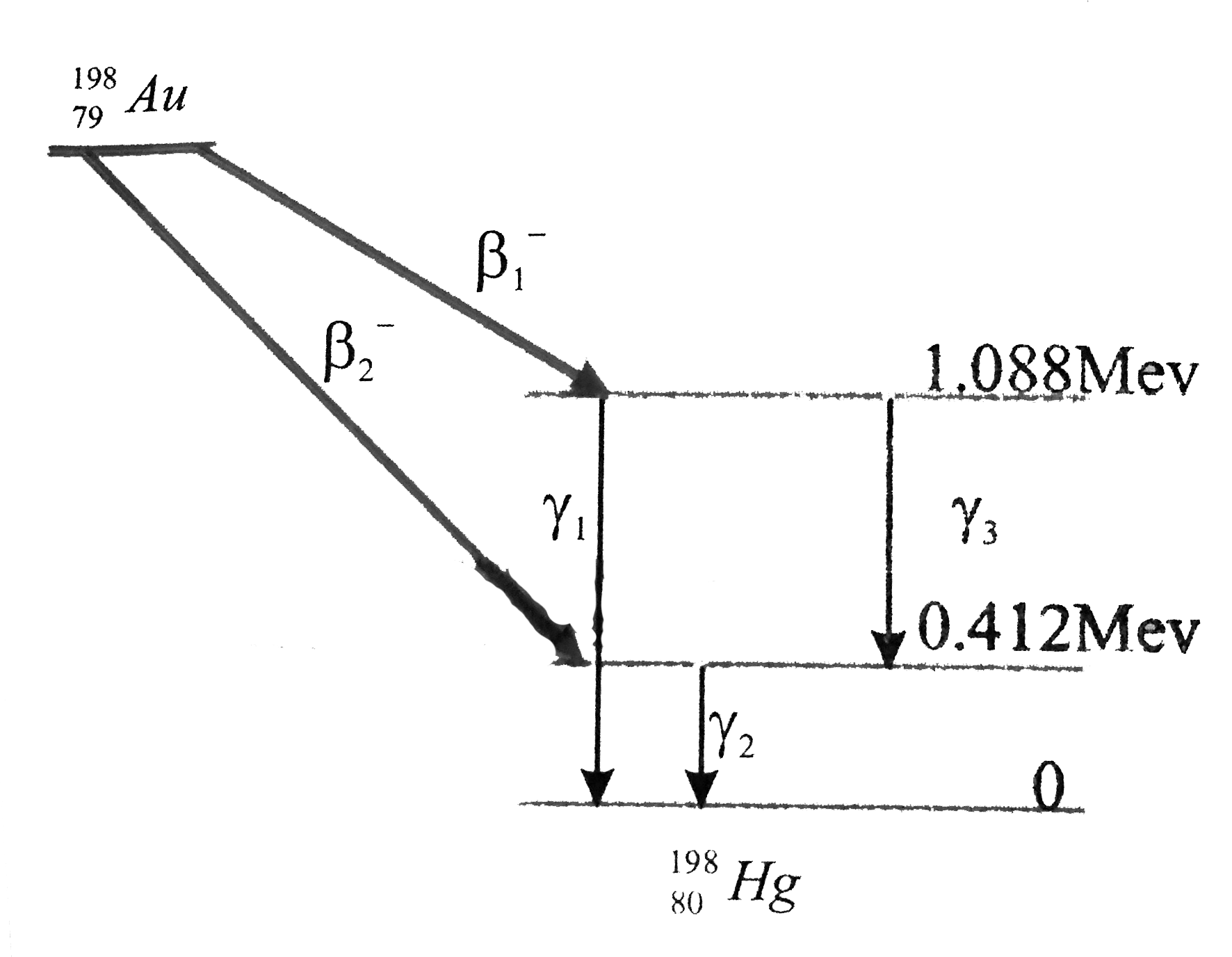Complete Solutions to NCERT FILE SOLVED (NCERT ADDITIONAL EXERCISES) of chapter NUCLEI of Class 12 book with complete answers and questions
| Class 12 | PHYSICS |
| Chapter | NUCLEI |
| MODERN PUBLICATION | NCERT FILE SOLVED (NCERT ADDITIONAL EXERCISES) |
| Number Of Questions | 9 |
| Academic Year | 2023-24 |
In a periodic table, the average atomic mass of magnesium is given as `24.312 u`. The average value is based on their relative natural abundance on earth. The three isotopes and their masses are `._12Mg^(24) (23.98504u)`, `._(12)Mg^(25) (24.98584)` and `._12Mg^(26) (25.98259 u)`. The natural abundance of `._12Mg^(24)` is `78.99%` by mass. Calculate the abundances of the other two isotopes.
View SolutionThe neutron separation energy is defined to be the energy required to remove a neutron form nucleus. Obtain the neutron separation energy of the nuclei `._(20)Ca^(41)` and `._(13)Al^(27)` from the following data : `m(._20Ca^(40))=39.962591u` and `m(._(20)Ca^(41))=40.962278u`
`m(._(13)Al^(26))=25.986895u` and `m(._(13)Al^(27))=26.981541u`
View SolutionA source contains two phosphorus radionuclides `._(15)P^(35) (T_(1//2)=14.3"days")` and `._(15)P^(33) (T_(1//2)=25.3"days")`. Initially, `10%` of the decays come from `._(15)P^(35)`. How long one must wait until `90%` do so?
View SolutionUnder certain circumstances, a nucleus can decay by emitting a particle more massive than an `alpha`-particle. Consider the following decay processes:
`._(88)Ra^(223)to._(82)Pb^(209)+._(6)C^(14)`, `._(88)Ra^(223)to._(86)Rn^(219)+._(2)He^(4)`
(a) Calculate the Q-values for these decays and determine that both are energetically allowed.
View SolutionConsider the fission `._(92)U^(238)` by fast neutrons. In one fission event, no neutrons are emitted and the final stable and products, after the beta decay of the primary fragments are `._(58)Ce^(140)` and `._(44)Ru^(99)`. Calculate Q for this fission process, The relevant atomic and particle masses are:
`m(._(92)U^(238))=238.05079u, m(._(58)Ce^(140))=139.90543 u, m(._(34)Ru^(99))=98.90594 u`
View SolutionConsider the so called D-T reaction (deuterium-tritium fusion) `._1H^2+._1H^3to._2He^4+n`
Calculate the energy released in MeV in this reaction from the data
`m(._1H^2)=2.014102u, m(._1H^3)=3.016049u`
(b) Consider the radius of both deuterium and tritium to be approximately 2.0fm. what is the kinetic energy needed to overcome the Coulomb repulsion between the two nuclei? To what temperature must the gases the be heated to initiate the reaction?
View SolutionObtain the maximum kinetic energy of `beta`-particles, and the radiation frequencies of `gamma` decays in the decay scheme shown in Fig. `14.6`. You are given that `m(.^(198)Au)=197.968233 u, m(.^(198)Hg)=197.966760 u`

View SolutionCalculate and compare the energy released by (a) fusion of 1.0kg of hydrogen deep within the sun, and (b) the fission of 1.0kg of `U^(235)` in a fission reactor.
View SolutionSuppose India has a target of producing by `2020 AD, 200,000 MW` of electric power, ten percent of which was to be obtained from nuclear power plants. Suppose we are given that, on an avedrage, the efficiency of utilization(i.e conversion to electric energy) of thermal energy produced in a reactor was `25%`. How much amount of fissionable uranium would our country need per year by `2020`? Take the heat energy per fission of `.^(235)U` to be about `200 MeV`.
View Solution
NCERT FILE SOLVED (NCERT ADDITIONAL EXERCISES) questions and complete solutions for chapter NUCLEI of MODERN PUBLISHERS PHYSICS (HINGLISH) of Class 12
All Exercises from MODERN PUBLICATION Class 12 PHYSICS NUCLEI
- CHAPTER PRACTICE TEST FOR BOARD EXAMINATION
- COMPETITION FILE (AIPMT/NEET & OTHER STATE BOARDS FOR MEDICAL ENTRANCES )
- COMPETITION FILE (ASSERTION REASON TYPE QUESTIONS)
- COMPETITION FILE (INTEGER TYPE QUESTIONS)
- COMPETITION FILE (JEE ADVANCED FOR IIT ENTRANCES)
- COMPETITION FILE (JEE MAIN & OTHER STATE BOARDS FOR ENGINEERING ENTRANCES)
- COMPETITION FILE (MATCHING TYPE QUESTIONS)
- COMPETITION FILE (MATRIX MATCH TYPE QUESTIONS)
- COMPETITION FILE (MULTIPLE CHOICE QUESTIONS BASED ON A GIVEN PASSAGE/COMPREHENSION)
- COMPETITION FILE (MULTIPLE CHOICE QUESTIONS WITH MORE THAN ONE CORRECT ANSWER)
- COMPETITION FILE (NCERT EXEMPLAR PROBLEMS OBJECTIVE QUESTIONS)
- COMPETITION FILE (OBJECTIVE TYPE QUESTIONS) (MULTIPLE CHOICE QUESTIONS)
- CONCEPTUAL QUESTIONS
- HIGH ORDER THINKING SKILLS & ADVANCED LEVEL
- NCERT FILE SOLVED (NCERT ADDITIONAL EXERCISES)
- NCERT FILE SOLVED (NCERT EXEMPLAR PROBLEMS SUBJECTIVE QUESTIONS (SHORT ANSWER TYPE QUESTIONS))
- NCERT FILE SOLVED (NCERT EXEMPLAR PROBLEMS SUBJECTIVE QUESTIONS) (VERY SHORT ANSWER TYPE QUESTIONS)
- NCERT FILE SOLVED (TEXTBOOK EXERCISES)
- PRACTICE PROBLEMS
- REVISION EXERCISES (ADDITIONAL QUESTIONS CARRYING 1 MARK)
- REVISION EXERCISES (FILL IN THE BLANKS)
- REVISION EXERCISES (LONG ANSWER QUESTIONS)
- REVISION EXERCISES (NUMERICAL PROBLEMS)
- REVISION EXERCISES (SHORT ANSWER QUESTIONS)
- REVISION EXERCISES (VERY SHORT ANSWER QUESTIONS)
- SOLVED EXAMPLES
- TOUGH & TRICKY PROBLEMS